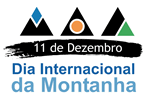
Hoje, 11 de Dezembro, é o
dia Internacional da Montanha. Nesse dia, a
UIAA - Union Internationale Des Associations D´Alpinisme, divulgou sua nova versão do documento
Mountain Ethics Declaration - Declaração de ética na montanha, um documento base para atividades em montanhas e paredes.
Este documento traz indicações éticas de como agir em diversas situações em montanhas/paredes como respeito à ética local, ação em equipe, situações de acidente, estilo de escalada, acesso e conservação e até sobre uso de oxigênio suplementar e expedições guiadas em alta montanha. Realmente é um documento base que devia ser seguido por todos escaladores/montanhistas e também por todos guias/empresas ligadas ao montanhismo e a escalada. Ainda não há uma versão deste documento em português (se você encontrar ou tiver paciência de traduzir me informe!) mas segue abaixo sua cópia, na íntegra, em inglês.
Mountain Ethics Declaration
Stretch your Limits,
Lift your Spirits
and Aim for the Top
1. Individual Responsibility
Mountaineers and climbers practice their sport in situations where there is a risk
of accidents and where outside help may not be available. With this in mind, they
engage in this activity at their own risk and are responsible for their own safety.
The actions of individuals should not endanger those around them nor damage the
environment. For example, the fixing of anchors on new or existing routes cannot
automatically be taken as acceptable.
2. Team Spirit
Members of a team should be prepared to make compromises in order to balance the needs and abilities of all the group. The climb will invariably be most successful
where the members support and encourage one another.
3. Climbing & Mountaineering Community
Every person we meet in the mountains or on a rock face deserves an equal measure of respect. Even in remote places and stressful situations, we should always treat others as we want to be treated ourselves.
4. Visiting Foreign Countries
When we are guests in foreign countries, we should always conduct ourselves politely and with restraint. We should show consideration to the local people and their culture ? they are our hosts. We should respect local climbing ethics and style and never drill holes or place bolts where there is a traditional ethic against it or where no locally established ethics exists. We will respect holy mountains and other sacred places and always look for ways to benefit and assist local economies and people. An understanding of foreign cultures is part of a complete climbing experience.
5. Responsibilities of Mountain Guides and other Leaders
Professional mountain guides, other leaders and members of the groups they lead should each understand their respective roles and respect the freedoms and rights
of other groups and individuals. In this declaration we recognise the high standards
of practice achieved by the mountain guides? own professional body.
6. Emergencies, Dying and Death
We must be prepared for emergencies and situations which result in serious accidents and death. All participants in mountain sports should clearly understand the risks and hazards and the need to have appropriate skills, knowledge and equipment. They need to be ready to help others in the event of an emergency or accident and also be ready to face the consequences of a tragedy. It is hoped that commercial operators in particular will warn their clients that their objectives may have to be sacrificed to assist others in distress.
7. Access and Conservation
We believe that freedom of access to mountains and cliffs in a responsible manner is a fundamental right. We should always practice our activities in an environmentally sensitive way and be proactive in preserving nature and the landscape. We should always respect access restrictions and regulations agreed by climbers with nature conservation organizations and authorities.
8. Style
The quality of the experience and how we solve a problem is more important than whether we succeed. We should always strive to leave no trace on the rock face or
the mountainside.
9. First Ascents
The first ascent of a route or a mountain is a creative act. It should be completed
in a manner at least as good as the style and traditions of the region. The way the
climb was achieved should be reported exactly.
10. Sponsorship, Advertising and Public Relations
The cooperation between sponsors and mountaineers or climbers must be a professional relationship that serves the best interests of mountain sports. It is the responsibility of the mountain sports? community to educate and inform both media and public in a proactive manner.
11. Use of supplementary oxygen in Mountaineering
The use of supplementary oxygen in high altitude mountaineering has been under debate for several years. In this debate, different components related to the topic
can be distinguished, such as medical aspects and ethical considerations. The medical aspects should be of paramount concern to all mountaineers. Ethical considerations are best left to the individual climber, provided that, if a climber does use oxygen, plans are made to remove used bottles from the mountain.
12. High altitude guided commercial expeditions
It is hoped that commercial operators, especially those without qualifications,
attempting 8000m or other comparable peaks which offer limited rescue facilities
will recognize the limitations of the clients in their care. All efforts should be made to ensure the safety of such clients and also to warn their clients that plans may have to be curtailed to help others on the mountain in distress.
The UIAA is the International Mountaineering and Climbing Federation.
We bring together millions of men, women and children joined by their passion for mountains.
www.theuiaa.org
As amended and approved in Porto 10.10.2009
- enviado por Tacio Philip às 11:35:00 de 11/12/2009.
< Anterior: Review e teste comparativo Canon EF 100mm f/2.8L IS USM macro |
Listar publicações |
Próxima: Filtro close-up, anel de inversão e tubo de extensão em macrofotografia >





